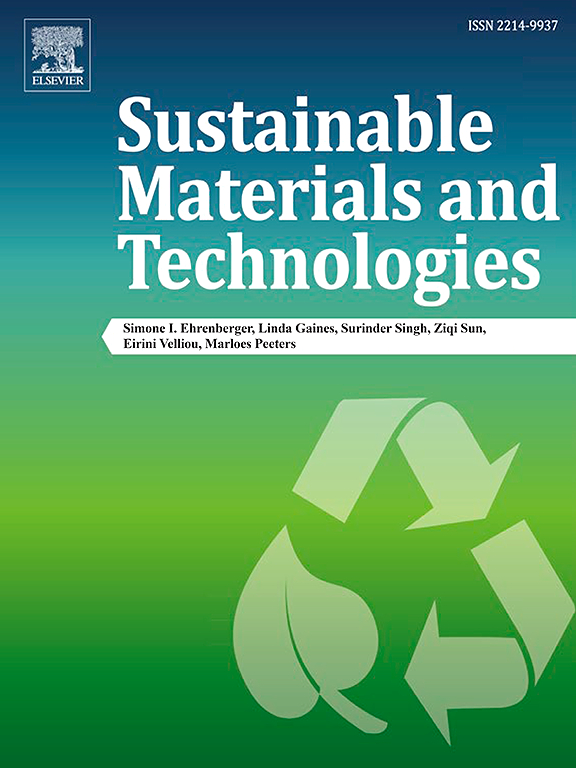Synergetic modulation of LATP coating and Se doping enables enhanced rate capability of layered Li-rich oxide
IF 8.6
2区 工程技术
Q1 ENERGY & FUELS
引用次数: 0
Abstract
Lithium-rich manganese-based cathode materials (LRMO) have emerged as the predominant cathode materials for next-generation lithium-ion batteries (LIBs) due to their advantages of high energy density. At elevated voltages (≥4.5 V), the partly reversible oxidation and reduction reactions of oxygen anions within LRMO give rise to the degradation of lattice oxygen, facilitating the migration of transition metal (TM) ions towards the lithium sites. Ultimately, the disintegration of the lamellar structure for LRMO leads to substantial voltage decay and reduced initial coulombic efficiency (ICE). In this work, a novel dual modification strategy of solid electrolyte coating layer construction of Li1.3Al0.3Ti1.7(PO4)3 (LATP) and Se doping for Li1.2Mn0.52Ni0.2Co0.08O2 (LRMO) have been adopted to enhance the structure stability and improve the lithium diffusion kinetics. Coating LRMO with LATP can effectively suppress the migration of TM ions to the lithium layer, while Se substitute for oxygen vacancies in LRMO, thereby inhibiting lattice oxygen loss and achieving excellent performance. The obtained sample exhibits a notably enhanced capacity retention of 75.1% from 61.9% after 300 cycles at 1C compared to the bare LRMO. This strategy, which stabilizes the layered structure of the material from two different perspectives, extends the research approach for LIBs.
LATP涂层和Se掺杂的协同调制使层状富锂氧化物的速率能力增强
富锂锰基正极材料(LRMO)由于其高能量密度的优势,已成为下一代锂离子电池(LIBs)的主要正极材料。当电压升高(≥4.5 V)时,LRMO内氧阴离子发生部分可逆的氧化还原反应,导致晶格氧降解,促进过渡金属(TM)离子向锂离子位迁移。最终,LRMO层状结构的解体导致了电压衰减和初始库仑效率(ICE)的降低。本文提出了一种新型的双重改性策略,即构建Li1.3Al0.3Ti1.7(PO4)3 (LATP)固体电解质涂层和掺杂Se的Li1.2Mn0.52Ni0.2Co0.08O2 (LRMO),以增强结构稳定性和改善锂扩散动力学。用LATP包覆LRMO可以有效抑制TM离子向锂层的迁移,而Se则替代了LRMO中的氧空位,从而抑制了晶格氧的损失,获得了优异的性能。与裸LRMO相比,在1C下循环300次后,所得样品的容量保留率从61.9%显著提高到75.1%。这种策略从两个不同的角度稳定了材料的分层结构,扩展了lib的研究方法。
本文章由计算机程序翻译,如有差异,请以英文原文为准。
求助全文
约1分钟内获得全文
求助全文
来源期刊

Sustainable Materials and Technologies
Energy-Renewable Energy, Sustainability and the Environment
CiteScore
13.40
自引率
4.20%
发文量
158
审稿时长
45 days
期刊介绍:
Sustainable Materials and Technologies (SM&T), an international, cross-disciplinary, fully open access journal published by Elsevier, focuses on original full-length research articles and reviews. It covers applied or fundamental science of nano-, micro-, meso-, and macro-scale aspects of materials and technologies for sustainable development. SM&T gives special attention to contributions that bridge the knowledge gap between materials and system designs.
 求助内容:
求助内容: 应助结果提醒方式:
应助结果提醒方式:


